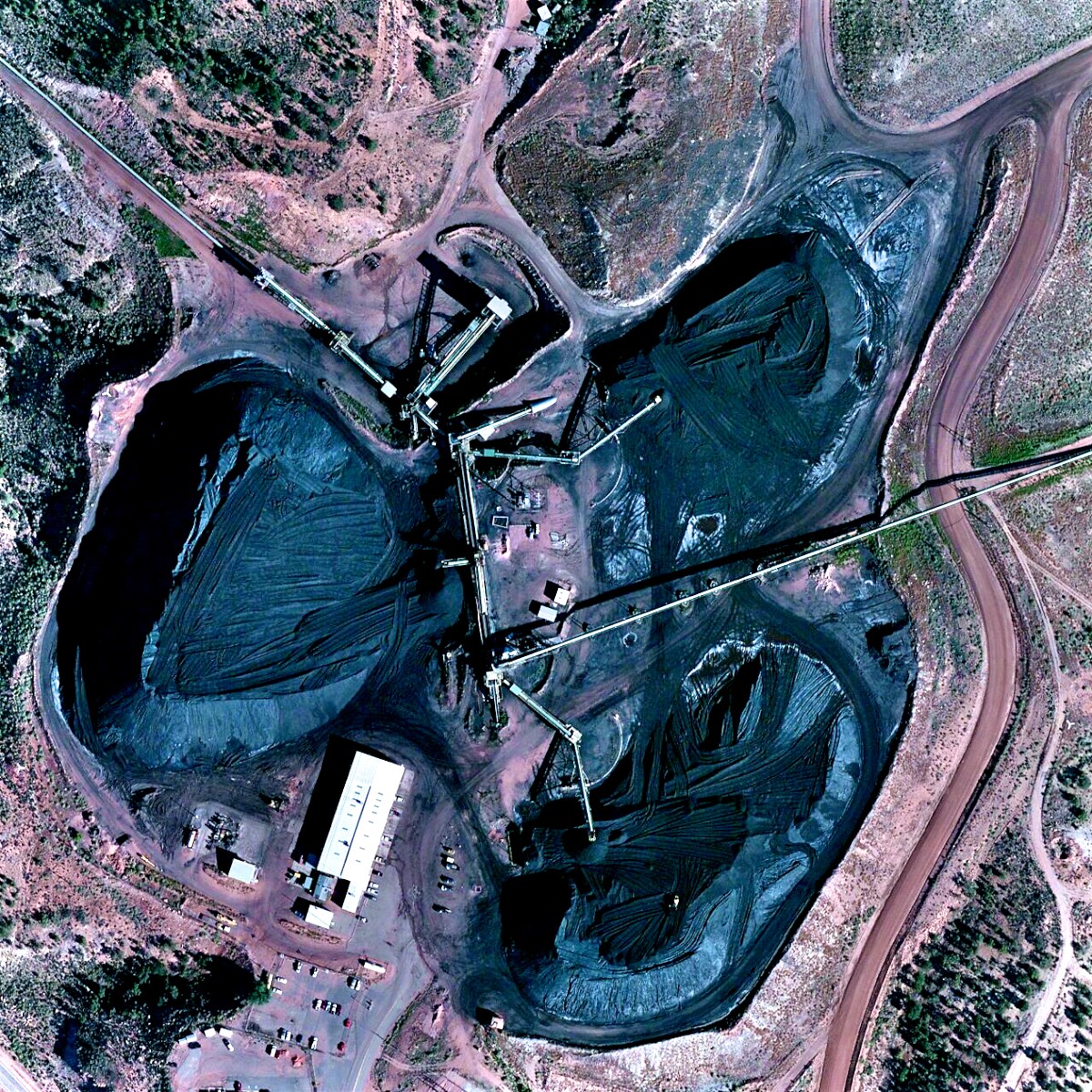
Black Heart is a visual parable, told through a mosaic of aerial imagery. This is the online media component of Black Heart, woven into the visual fabric of the work. While the work can, and should, be appreciated as a purely visual work of art, this online component tells the deeper narrative; a narrative of real people and the consequences of their actions in the world.
The Colorado River is the most contested watershed in the North America. It is also among most enigmatic. It travels 1,450 miles from the Rocky Mountains of Colorado, to its mouth at the Gulf of California. Eight US states and Mexico have claims to its water. These claims and the apportionment to the river’s water is laid out in the Colorado River Compact. Unfortunately, the annual flow of the river is unpredictable, and the Compact over-apportioned the river’s water. California (specifically Los Angeles) quickly grabbed it's apportioned share, but Arizona, because of engineering challenges –most of Arizona lies at a higher elevation than the River, was late to the game.
The Phoenix Valley in Central Arizona was blessed with two seasonally prolific rivers and an abundant underground aquifer. Native Americans had farmed the low lands of the Salt River and Gila River since 300 AD. In 1950, Phoenix had a population of just over 100,000 and was the 99th largest city in the US. Ten years later, the population had increase by a factor of 4 and Phoenix was the 25th largest US city. By 1980 the city had doubled in population again with nearly 800,000 residents and a huge population shift from northern industrial cities to the “Sun Belt” was well underway. In Phoenix, there were mouths to feed, houses to build, and money to be made. Today, the human population of the Phoenix Valley is over 1.5 million.
The Central Arizona Project, begun in the mid-1970’s and completed in the mid-1990’s, was the answer to Arizona getting its apportionment of Colorado River water, and its share of the federal pork barrel that was the Bureau of Reclamation. Since early in the 20th century, the Bureau had been building dams on all of the major rivers of the West, to irrigate the arid land (a story that is engagingly told in the book Cadillac Desert). These water projects were never in-and-of-themselves economically viable, and despite being sold as water for the family farmer, were in reality boondoggles for the emerging agribusiness industry. All previous large Bureau of Reclamation projects had funded their water escapades with hydro-electric power from dams (sold to the growing cities of the desert west), and there were no good dam locations left. The Central Arizona Project not only had the problem of funding construction, but an ongoing need for large amounts of electrical power: it takes a lot of energy to pump a river uphill.
Black Mesa Coal provided the solution: cheap, dirty, energy. The Black Mesa in North-Central Arizona is rich in coal deposits. The problem was, that the Navajo and Hopi people lived on the land. In an act of brazen government-capitalist collusion, the Tribes were coerced into agreements that not only gave them a fraction of the market value of their coal, but also displaced thousands of people from their ancestral lands, and radically degraded the environment and cultural heritage of the Black Mesa.
Black Heart refers to the condition in which the heart is closed to compassion due to multiple repeated trauma. Such is the ongoing relationship of the people and government of The United States to the American Indian. This is the parable of Black Heart.
Imagery: the Black Mesa coal mines, the Colorado River at Lake Havasu, the Phoenix Valley